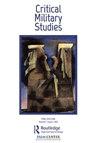纪律和惩罚:西班牙内战期间叛军对其军队使用的强制措施
Q1 Arts and Humanities
引用次数: 0
摘要
摘要本文旨在说明西班牙内战期间,反抗军为保持对其军队的控制而制定的措施。采取的强制措施逐渐收紧,在第一届法语政府时期达到顶峰。它们建立在融合、宣传、监视和惩罚的基础上。这篇文章的重点是,实施监视和惩罚是因为军队在社会政治上不同质。这些措施也基于传统和殖民军事意识形态、民族主义性质以及来自欧洲的新趋势:如法西斯主义。该文本还描绘了战斗人员融合的背景,以及法语国家“新国家”是如何在20世纪40年代和50年代初建立的。本文章由计算机程序翻译,如有差异,请以英文原文为准。
‘Discipline and punishment’: coercive measures used by the rebels against their troops during the Spanish Civil War
ABSTRACT This article aims to illustrate the measures which were developed by the rebel army in order to maintain control over their troops during the Spanish Civil War. Coercive measures were adopted that became progressively tightened, reaching a peak during the first Francoist government. They were based on integration, propaganda, surveillance and punishment. This article focuses on the idea that surveillance and punishment were applied because troops were not socio-politically homogeneous. Measures were also based on traditional and colonial military ideology, and nationalist in nature, and new tendencies arriving from Europe: such as fascism. This text also serves to portray the context in which the combatants were integrated, as well as how the Francoist ‘New State’ was established during the 1940s and early 1950s.
求助全文
通过发布文献求助,成功后即可免费获取论文全文。
去求助
来源期刊

Critical Military Studies
Arts and Humanities-History
CiteScore
1.90
自引率
0.00%
发文量
20
期刊介绍:
Critical Military Studies provides a rigorous, innovative platform for interdisciplinary debate on the operation of military power. It encourages the interrogation and destabilization of often taken-for-granted categories related to the military, militarism and militarization. It especially welcomes original thinking on contradictions and tensions central to the ways in which military institutions and military power work, how such tensions are reproduced within different societies and geopolitical arenas, and within and beyond academic discourse. Contributions on experiences of militarization among groups and individuals, and in hitherto underexplored, perhaps even seemingly ‘non-military’ settings are also encouraged. All submitted manuscripts are subject to initial appraisal by the Editor, and, if found suitable for further consideration, to double-blind peer review by independent, anonymous expert referees. The Journal also includes a non-peer reviewed section, Encounters, showcasing multidisciplinary forms of critique such as film and photography, and engaging with policy debates and activism.
 求助内容:
求助内容: 应助结果提醒方式:
应助结果提醒方式:


